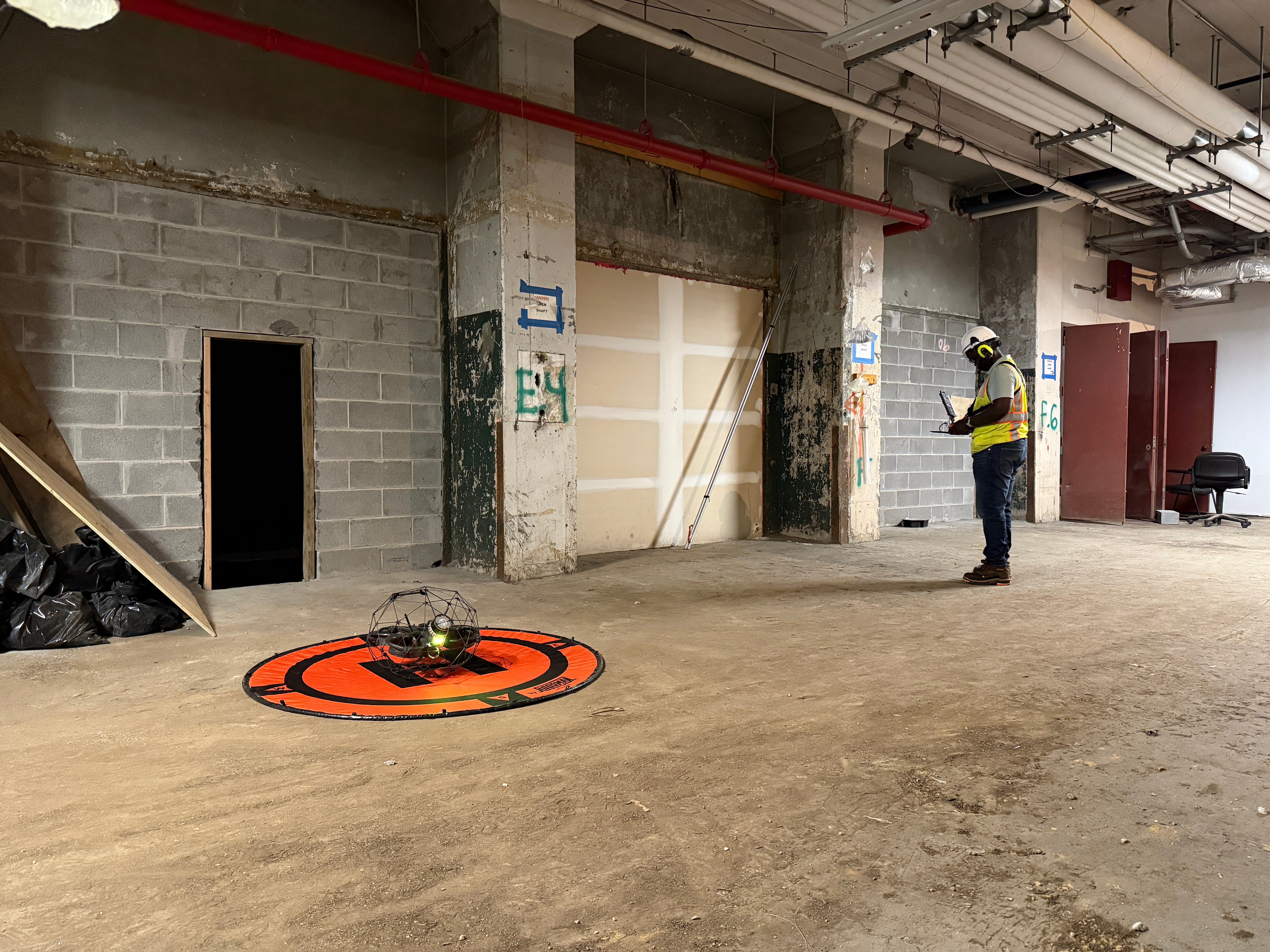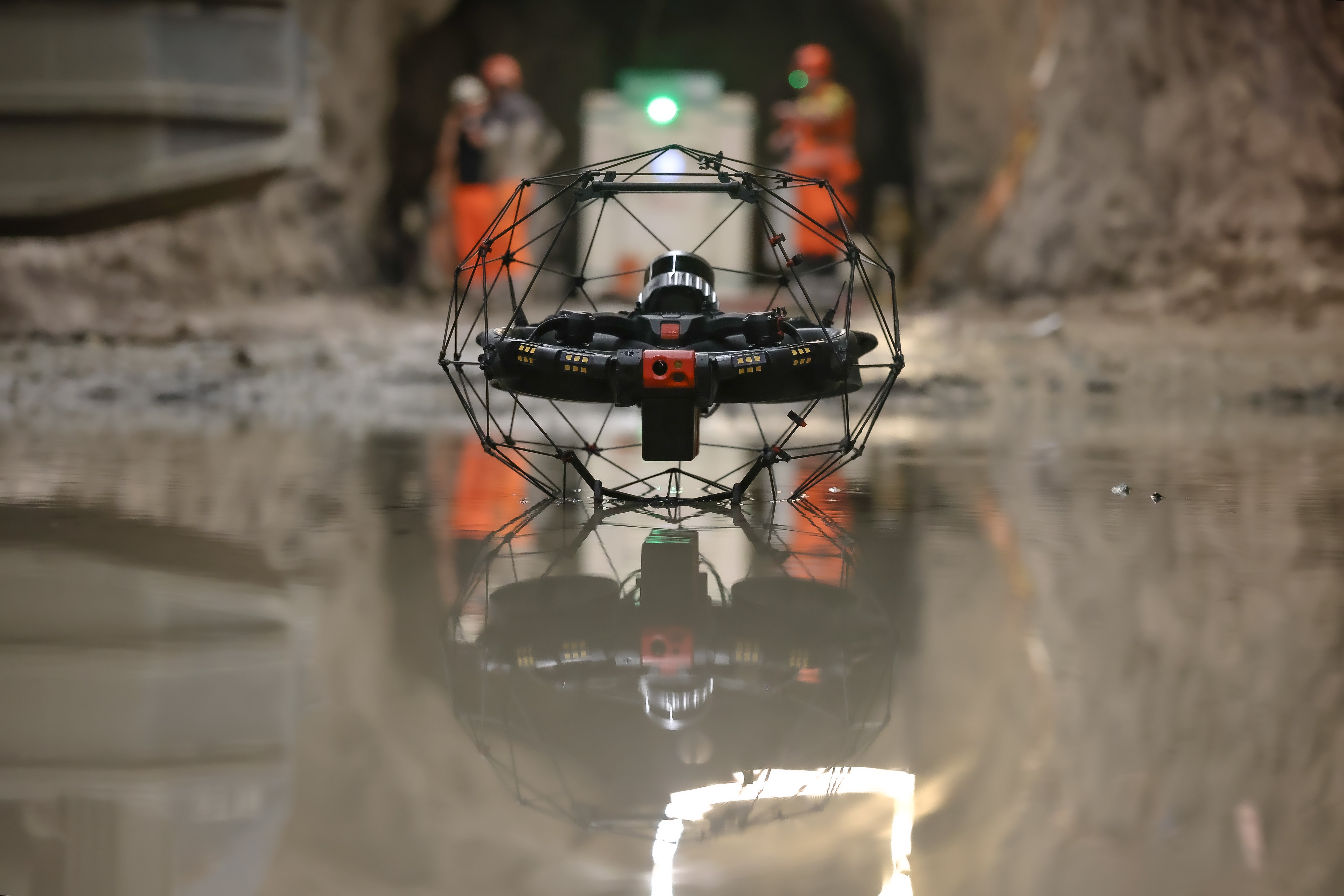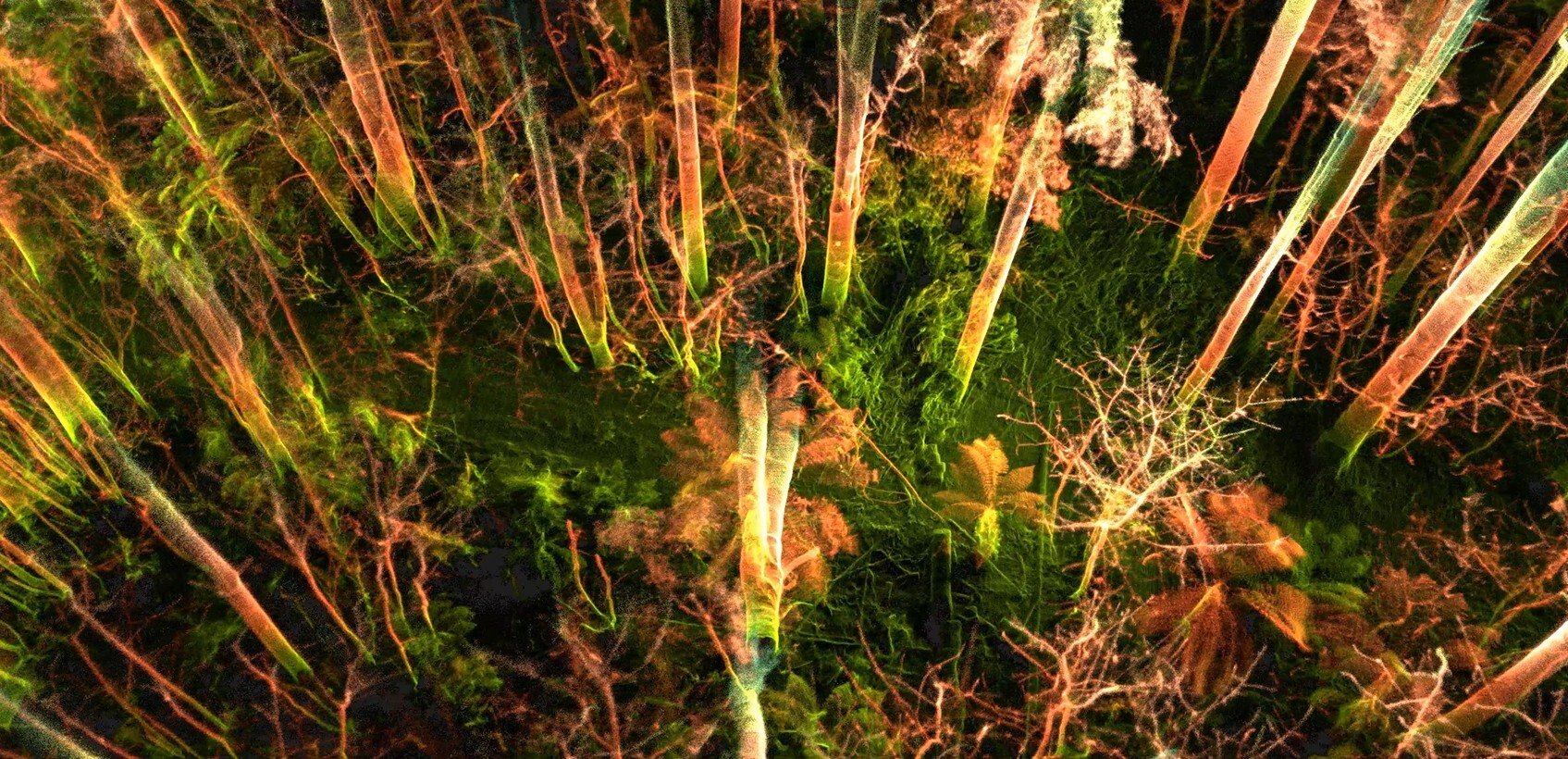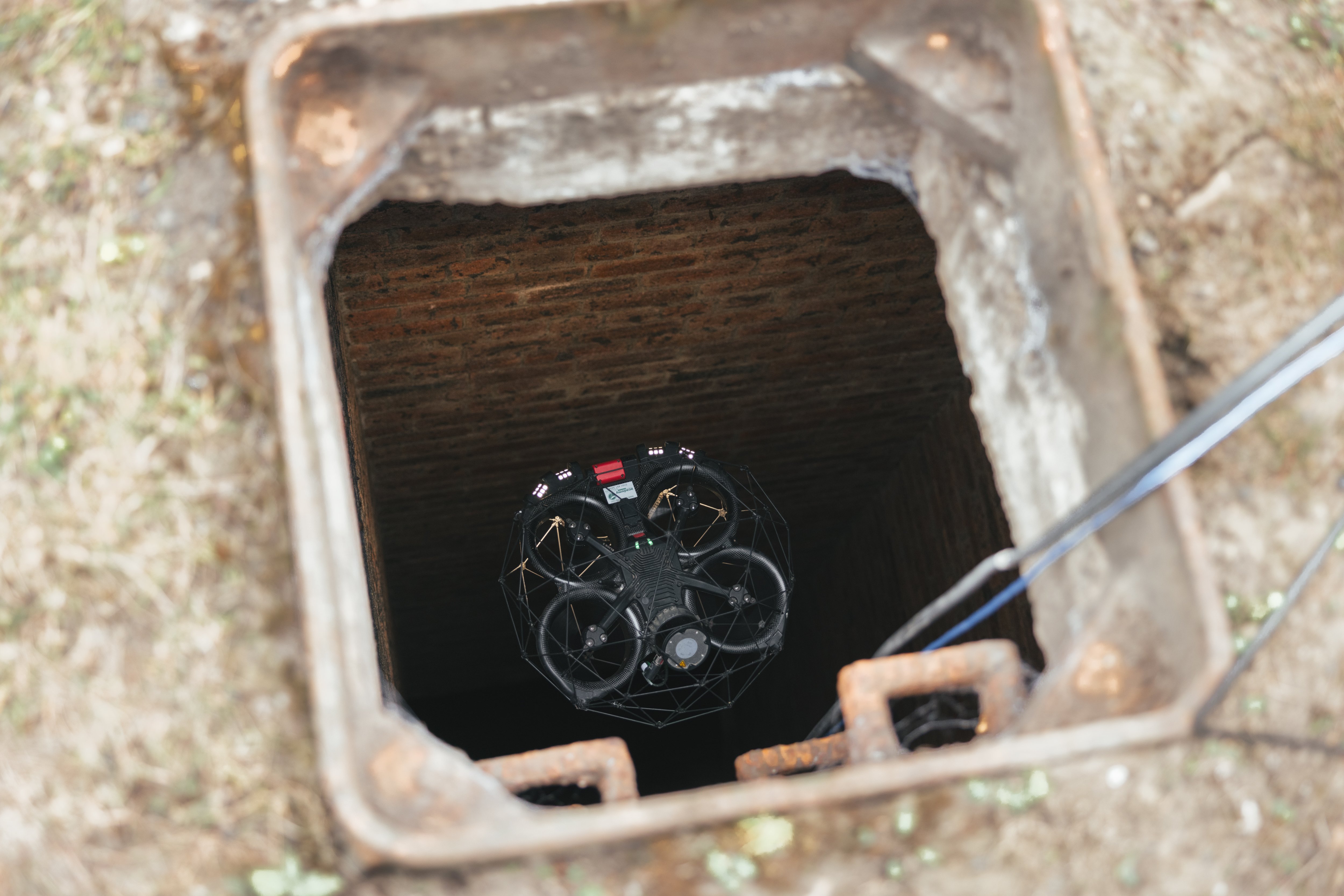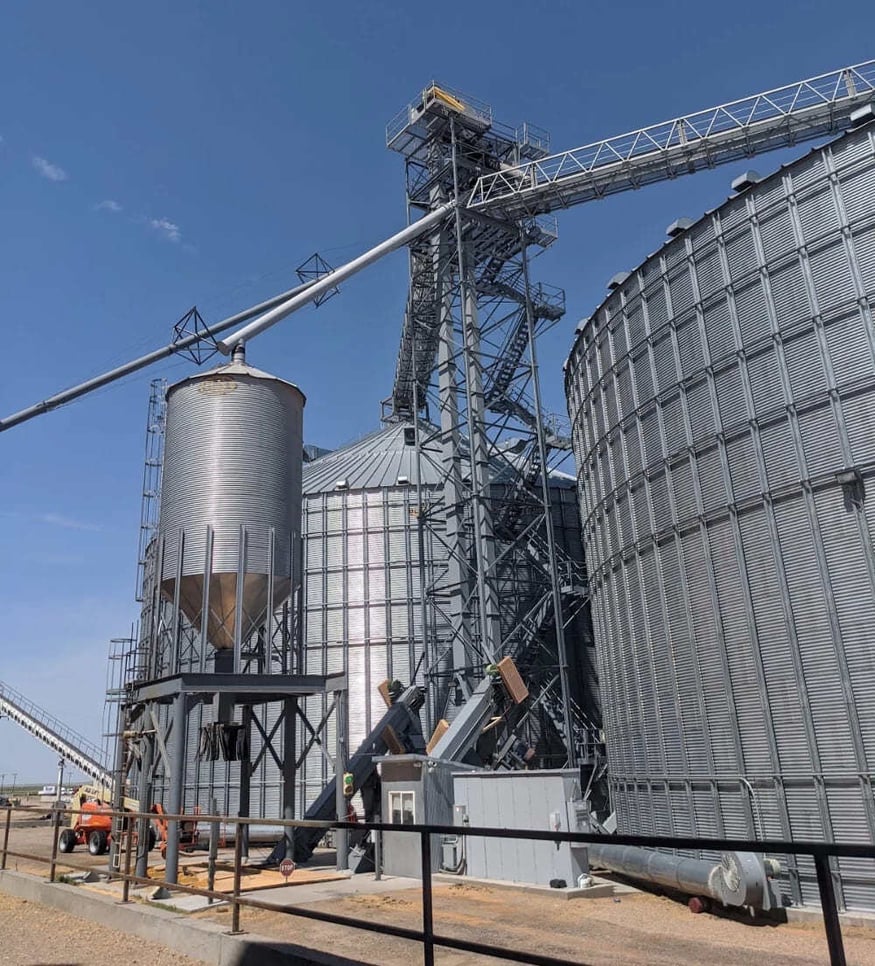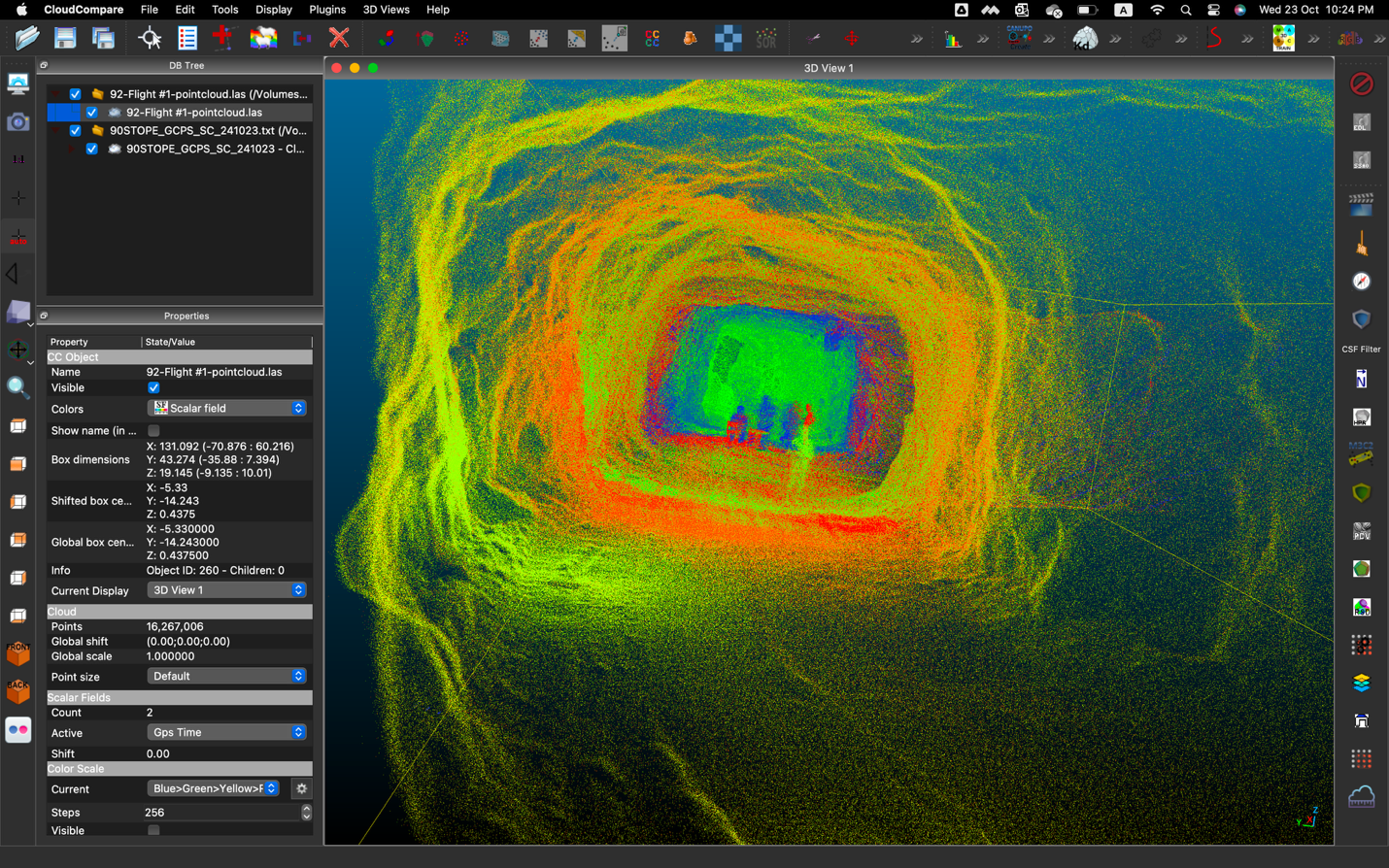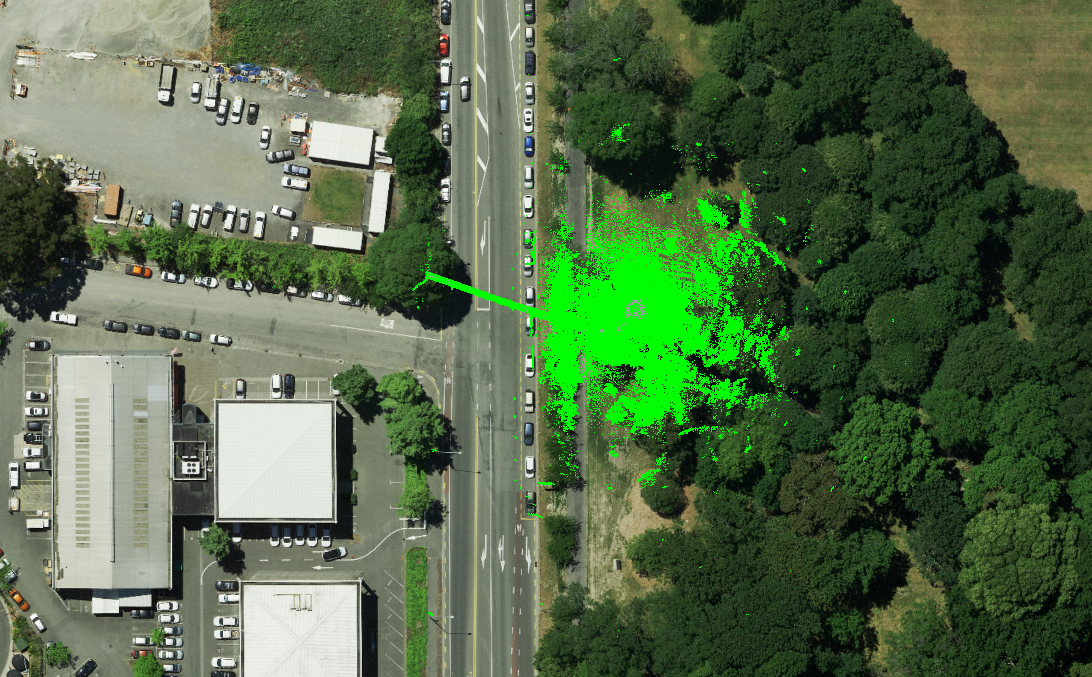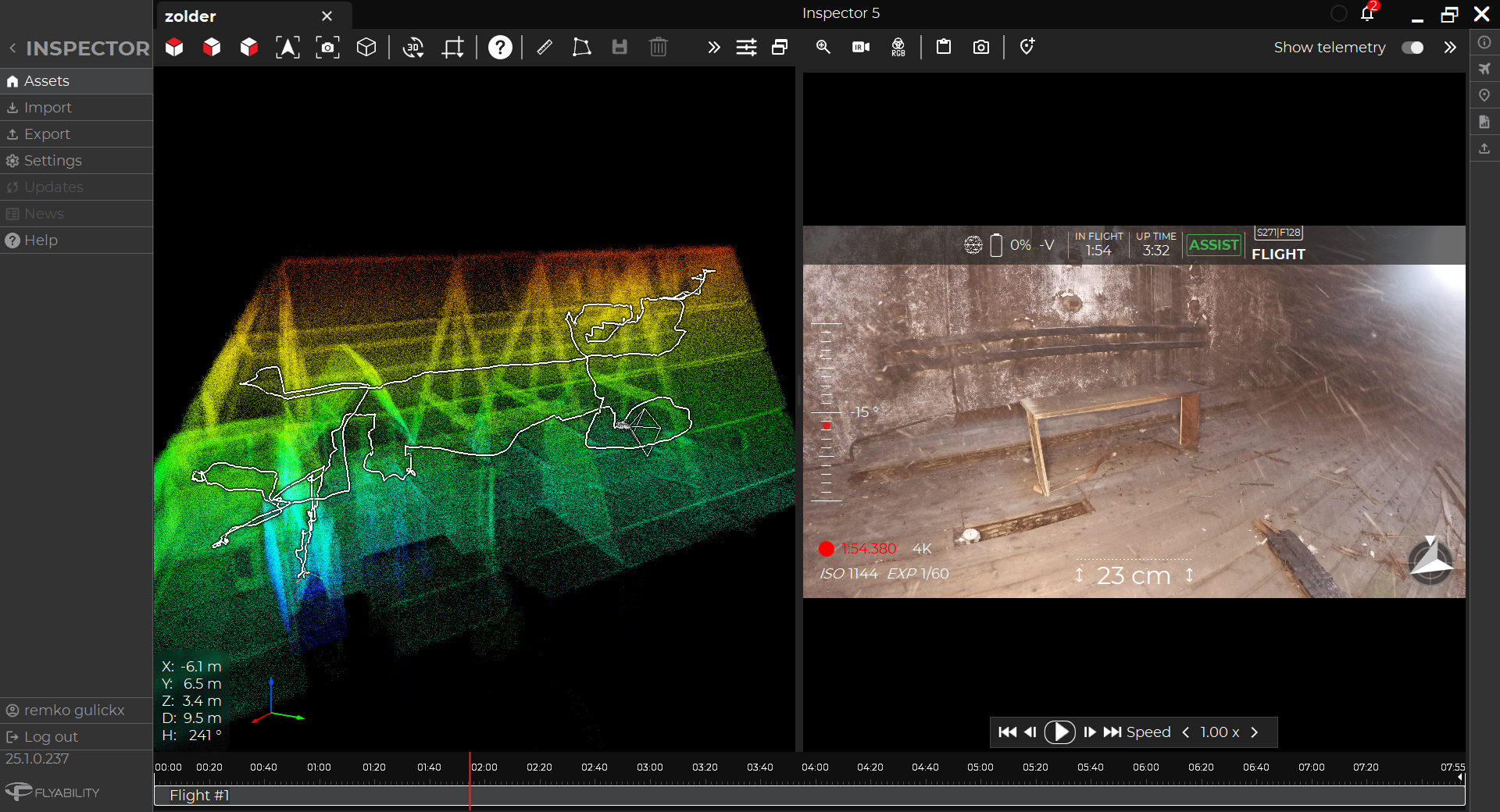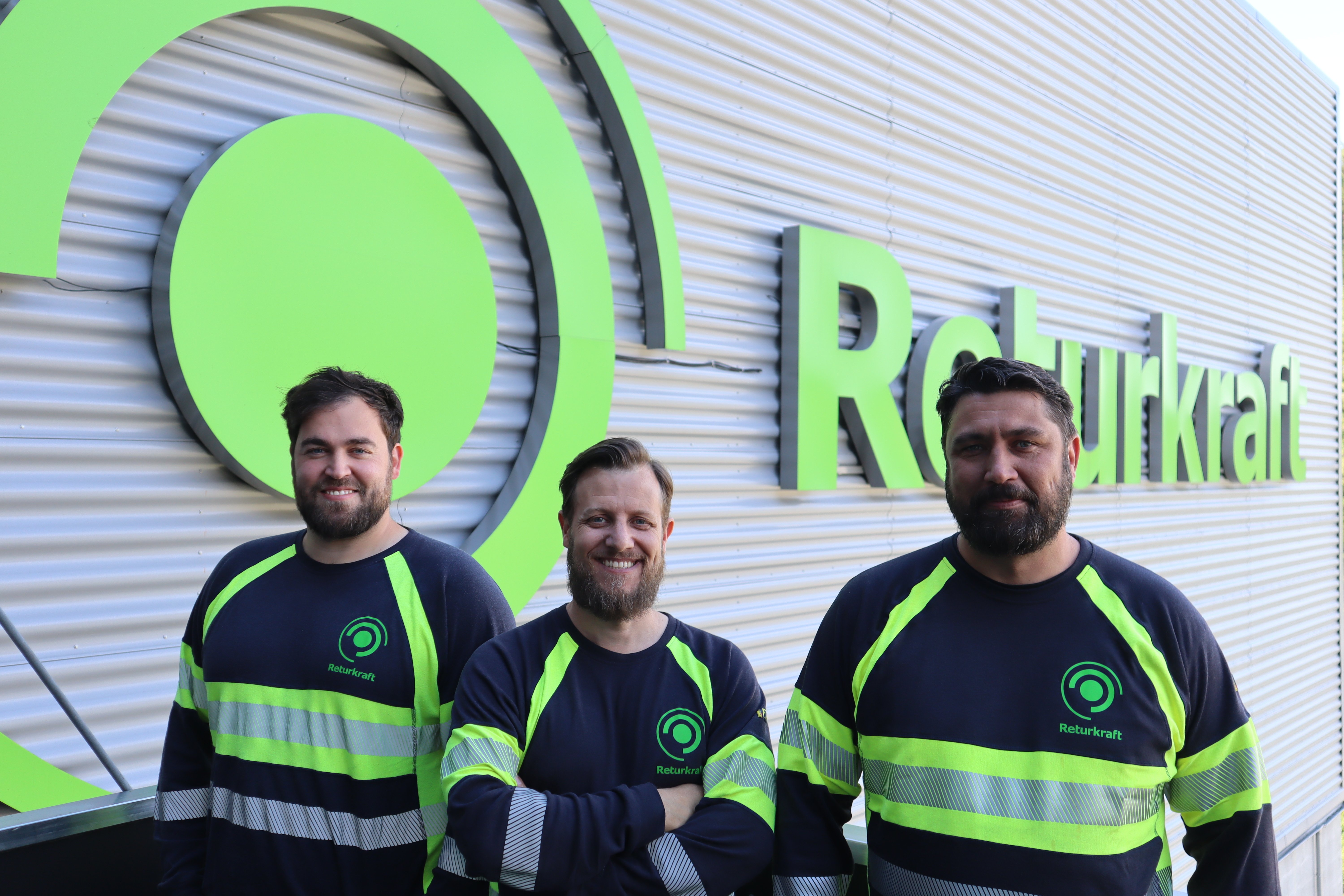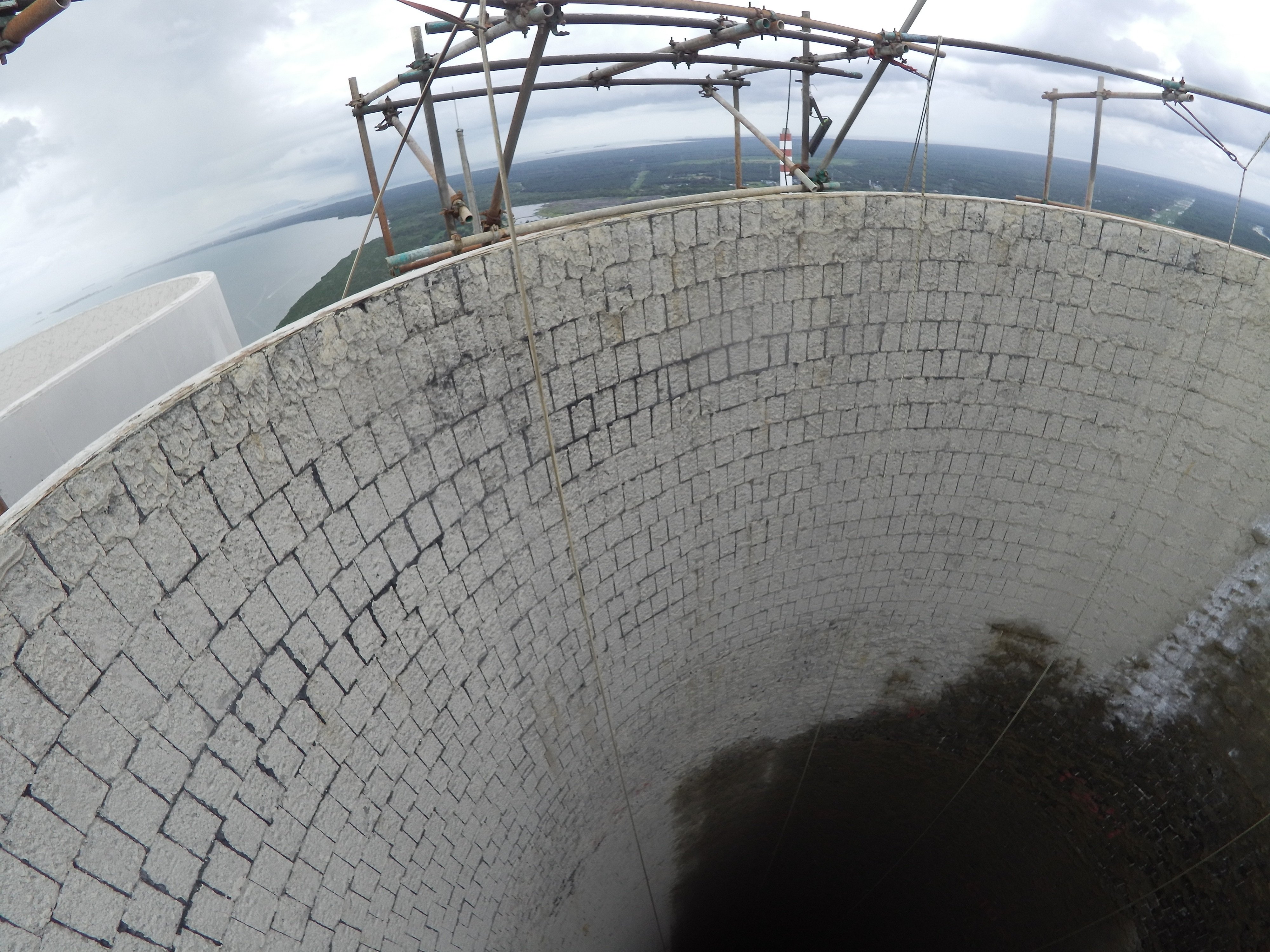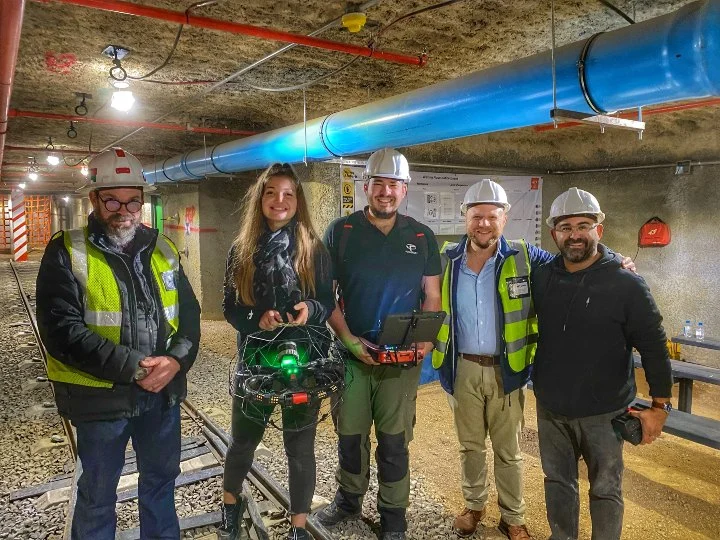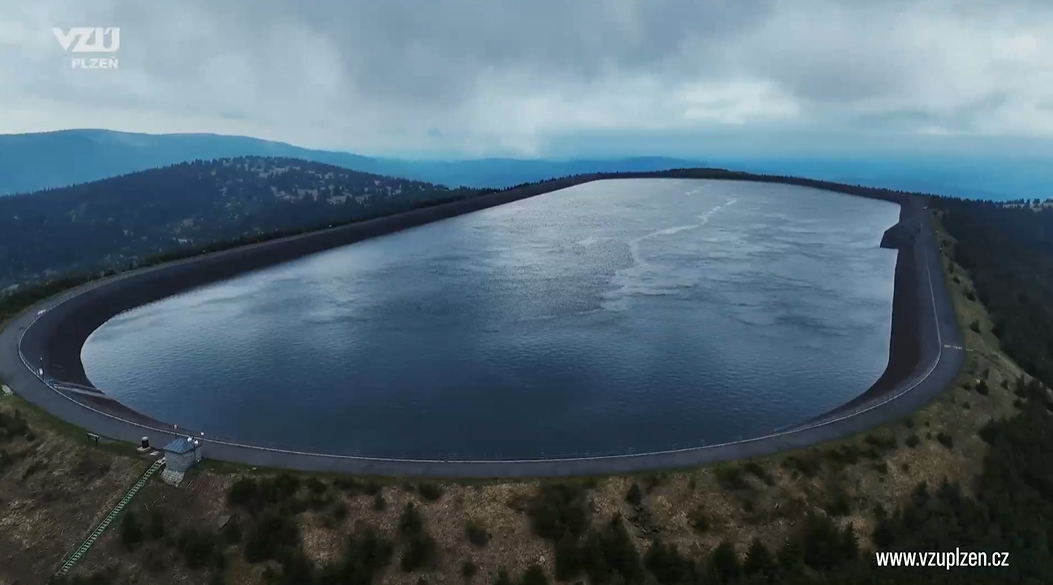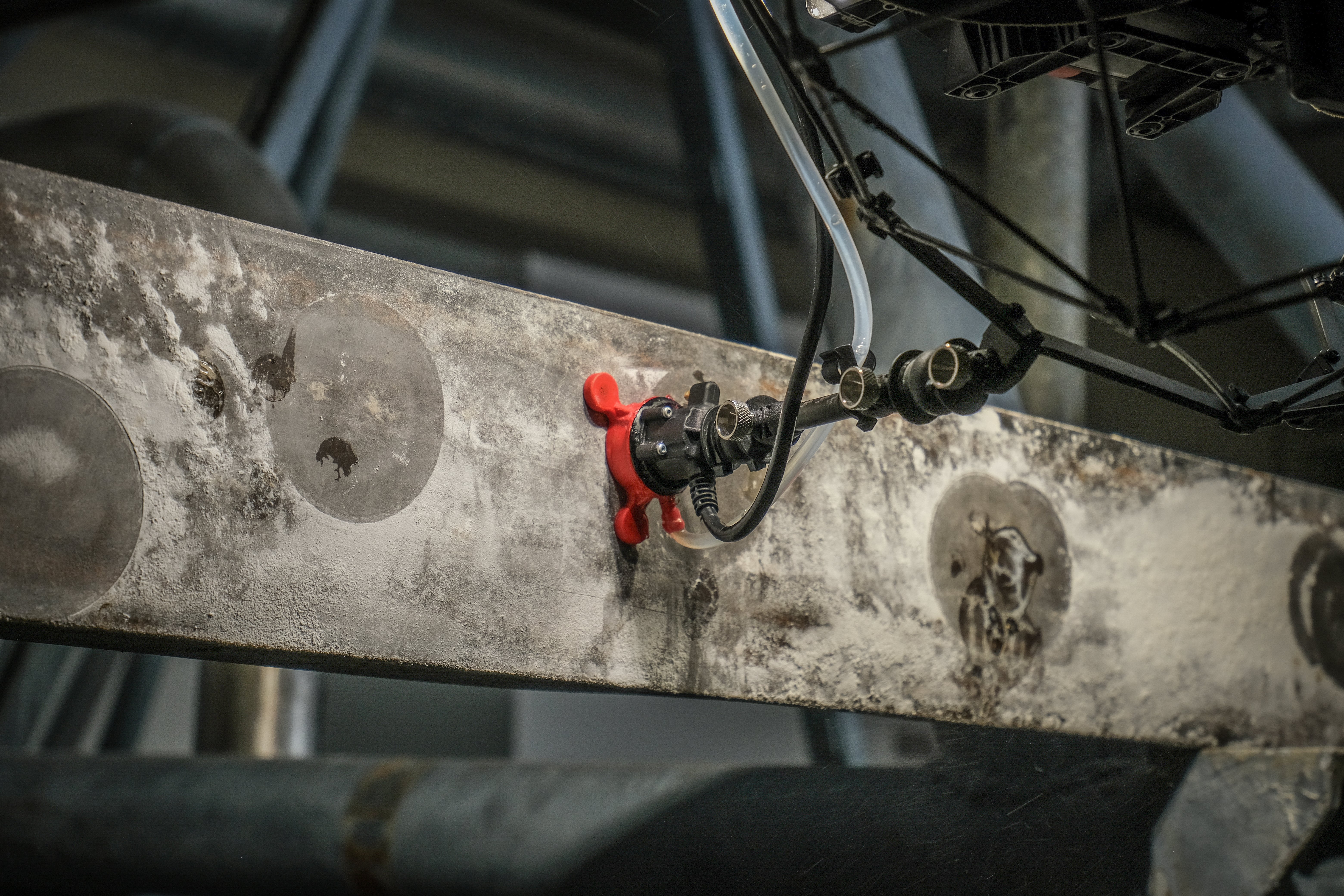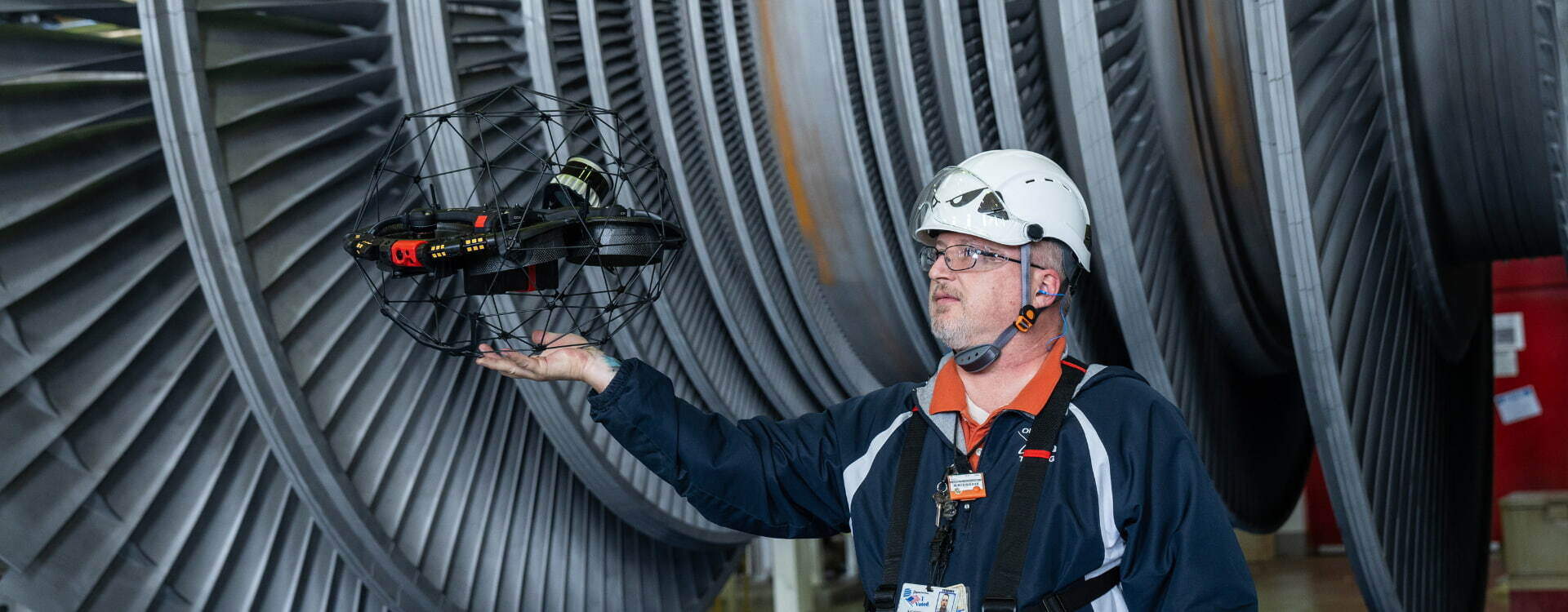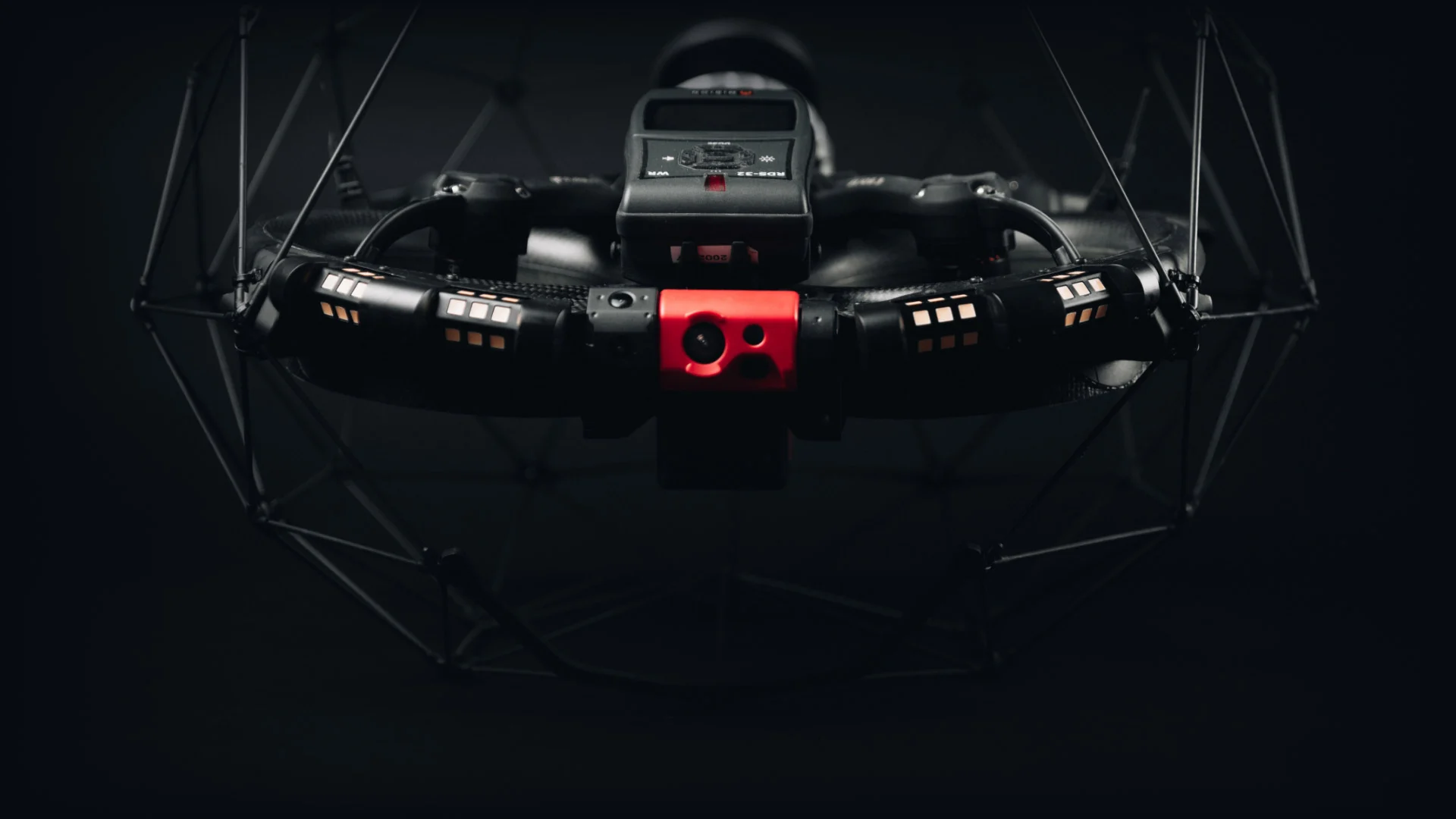- Case Studies >
- UT Drone Inspections at a Cement Plant
UT Drone Inspections At A Cement Plant
Benefits In A Nutshell
|
Access |
Speed Inspections with the Elios 3 were so much faster than traditional methods that it was possible to inspect multiple large assets in a single day. |
|
Safety Using a UT drone for inspections cuts the need for scaffolding and rope access, reducing risks to staff.
|
Data Quality The Elios 3 gathers UT spot measurements inside assets to the standards required for industrial inspections, empowering digital asset management. |
A cement plant relies on a smooth connection between assets - from quarry to crusher, mills to the kiln, clinkers to silos. The maintenance of each of these elements is carefully planned by plant managers to minimize the disruption to operations when an asset is partially or entirely unavailable.
Inspections are a crucial part of the careful maintenance of the production of a cement plant. In many cases, visual inspections are just part of the wider non-destructive testing process. It is also necessary to gather ultrasonic thickness (UT) measurements to monitor the condition of certain assets.
Access to all these assets, however, is not always easy. Oftentimes scaffolding or rope access is required to reach higher structures, which is slow and exposes staff to risk. Today, the Elios 3 and its UT payload provide a safer, more efficient inspection alternative.
Turning To UT Drone Inspections For Industry
The Elios 3 is a specialized UT drone designed to access complex and confined spaces instead of people, reducing the risk exposure of staff. Reaching the insides of stacks or silos, the drone can gather necessary data vital for certifying the condition of assets and identifying potential maintenance needs early.
InspecDrone, a specialist inspection company in Germany, were involved in testing the new UT payload for the Elios 3 drone. As part of this, they visited a cement plant to inspect assets and demonstrate to the site owners how the drone can streamline and improve inspections.
Inspecting Assets With The Elios 3 UT Drone
1. Flue Duct
The first asset being inspected was a flue duct. This duct is rectangular at one end before becoming more rounded later on. The initial rectangular zone has been partially replaced and the client wanted to determine the degradation of the fixed steel. As this duct transfers air from the raw mill towards a filter, it carries air and dust that is up to 300 degrees Celsius in temperature and corrosive. The decay of this duct must be carefully monitored as if it broke, it would be complicated to replace and halt production for a significant portion of the plant.
The duct is challenging to inspect with traditional methods. Due to insulation on the structure as well as how it bends, it must be inspected from the inside. It reaches 50 meters high and, due to a fan system, only has 1 open end. This means confined space inspections with people are severely limited and may require the fan casing to be opened to comply with confined space entry restrictions. The inspection typically involves a crew of 3 people or more where one person is climbing with rope access, a second person is watching and doing safety checks, and the third crew member assists the climber. The preparation of the ropes, safety procedures, and permits often takes at least 1 day if not longer - and this is before the data is collected. As a result, the entire inspection process even for a small section of this flue duct is challenging.

The Elios 3 and UT payload reached inside the flue duct despite dust and the bends in the duct's shape
With the Elios 3, this was all made far simpler. The drone entered the duct and was able to fly through the target rectangular area under the guidance of just 1 pilot. The duct inspection with the UT drone took less than 2 hours.
For an inspection of this nature, it would be typical to take 5 UT measurements per meter in addition to any additional spot measurements at points of interest. As the Elios 3 provided clear visual data, it was easy to identify points of interest to take extra A-scans. Over the course of 4 flights inside the duct, the Elios 3 pilot collected over 20 measurements per flight, inspecting the first few meters inside the duct.
The inspection by InspecDrone was so quick that they were granted permission to do demonstration UT inspections on other assets. The site managers were used to traditional inspections and were surprised by how fast the Elios 3 UT completed the inspection with a combination of visual and ultrasonic data.
2. Silo Cones
The Elios 3 was then put to the test by inspecting the cones of limestone silos. These silos were large steel structures housed inside a warehouse. There was no insulation on the silos, meaning it was possible to take measurements from the outside of the silos rather than inside. However, they were all slightly raised several meters off the ground. This complicates taking UT measurements on this structure as access would require scaffolding or above-ground elevation through mobile elevated work platforms. Despite the logistical complexity, the inspections here are critical as the cones face a high abrasion rate.
Inspecting the 6 silos with the traditional scaffolding approach would likely cost several thousand euros, take hours of planning, material transport, and require multiple measurement points per silo. Previous UT measurements had been recorded with chalk numbers written onto the silos, but this is not a very clear or reliable means of recording UT measurement changes.

The Silo cones were inspected with the Elios 3 alongside the existing measurements in chalk
By contrast, the Elios 3 with its UT payload completed UT surveys with ease. Within 1-2 flights per silo, the drone could measure 25-30 points. All of this was done by just 1 pilot, a stark contrast to the labor-intensive process scaffolding would require. Similarly, the Elios 3 UT also provides results in a digital format that are geolocated onto the asset. This means there is a digital record of not only the UT measurement but its exact location so that future inspections can take data from the same measurement points and simplify calculating the abrasion rate and monitor the asset’s overall condition.
In addition, the Elios 3 pilot then had the chance to inspect ducts that were in the roof of the building. These ducts are difficult to access, and thus only maintained on an as-needed basis - such as if there is a strange noise heard or visual defect. Now, with the Elios 3, it was possible to complete a short inspection and get an overview of the condition of the smaller ducts. This data was previously unavailable and yet the Elios 3 UT was able to gather it in minutes in addition to the silo inspections and the flights inside the flue duct.
Opening The Door To Improved Inspections With Drones
The speed, safety, and enhanced access provided by the Elios 3 UT in a single day at this cement plant demonstrated the sheer difference the Elios 3 can make to inspection processes. Rather than having to rely on methods that involve days of planning, special permission, and prolonged downtime, the Elios 3 UT was able to gather data quickly and safely.

Quality of results: with the Elios 3 UT, it is easy to localize aénd record UT points ready for analysis later in Inspector 5
Not only this, but the access the drone provides can enhance the overall workings of the site. As inspections can be done more quickly, they can be done preemptively, rather than having to inspect assets less frequently due to cost/downtime concerns. This is a huge step forward in optimizing how the plant operates as it represents long-term savings from using drones, rather than one-off benefits. It opens a path toward greater outputs without compromising the safety or integrity of the site.
InspecDrone’s client was so impressed that they wanted to learn more about the applications of the Elios 3 UT drone for inspections of other assets around the site. Between the flue duct, the silos, and the smaller duct systems, the Elios 3 made it clear that inspections need not be cumbersome or complex - they can be quick without reducing the quantity of data available.


.png)

